Nationality England | Name John Graunt | |
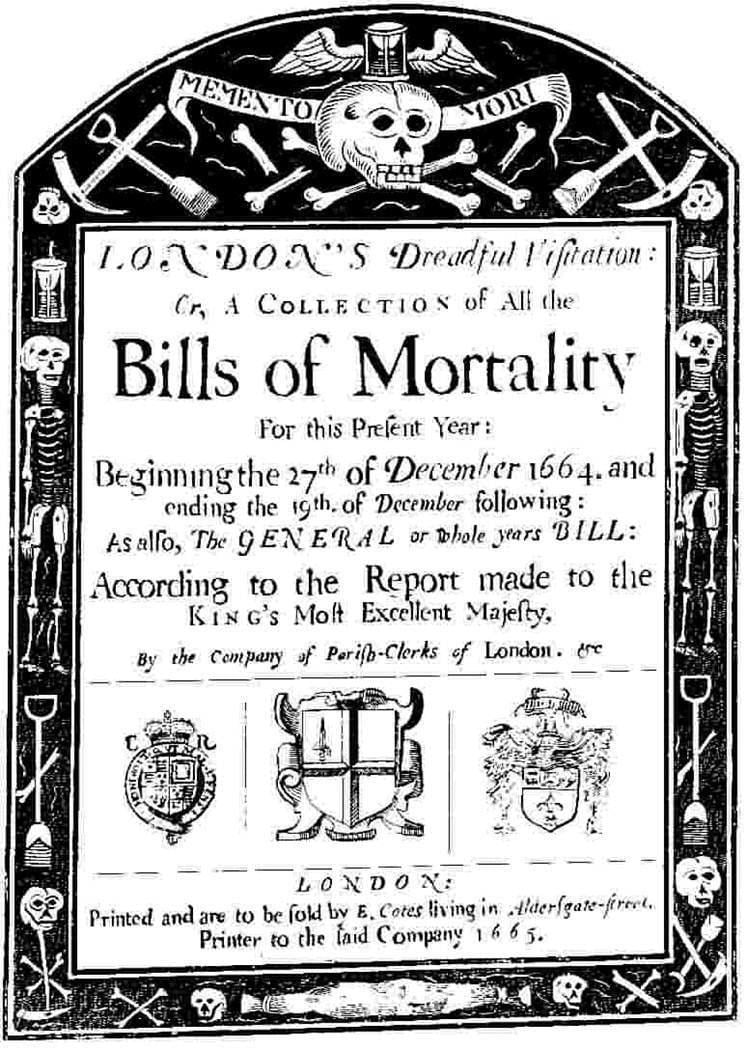 | ||
Born April 24, 1620London ( 1620-04-24 ) Died April 18, 1674, London, United Kingdom Books Natural and political observations mentioned in a following index and made upon the bills of mortality Similar People William Petty, Jacob Bernoulli, William Sealy Gosset, Charles II of England, Blaise Pascal | ||
Mortality past and present introduction to the conference on john graunt s bills of mortality
John Graunt (24 April 1620 – 18 April 1674) was one of the first demographers, though by profession he was a haberdasher.
Contents
- Mortality past and present introduction to the conference on john graunt s bills of mortality
- John graunt the law of decline and the origins of urban historical demography richard smith
- Biography
- References
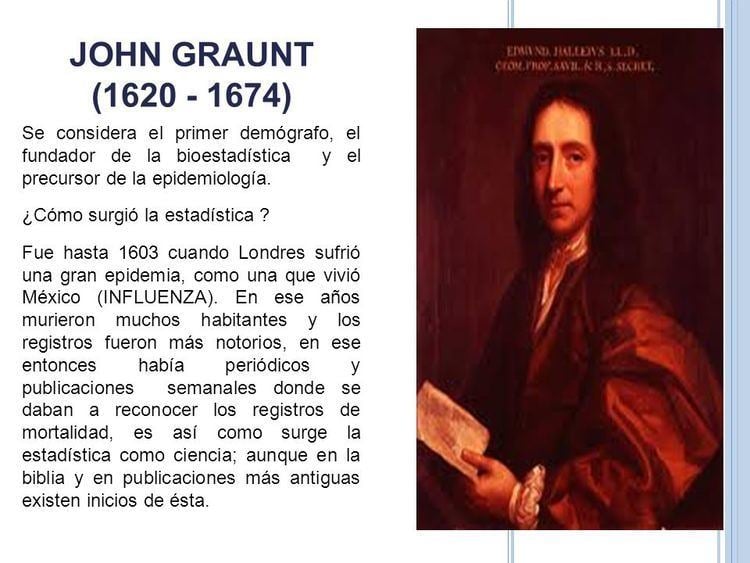
John graunt the law of decline and the origins of urban historical demography richard smith
Biography
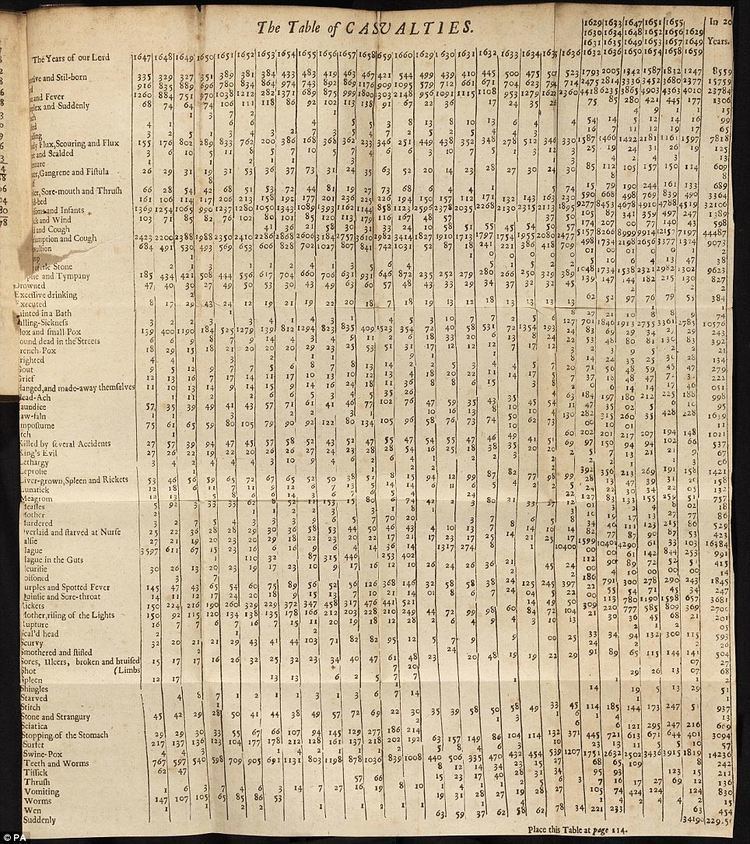
Born in London, the eldest of seven or eight children of Henry and Mary Graunt. His father was a draper who had moved to London from Hampshire. In February 1641, Graunt married Mary Scott, with whom he had one son (Henry) and three daughters.
He worked in his father's shop until his father died in 1662, and became influential in the City. He was able to secure the post of professor of music for his friend William Petty in 1650. He served in various ward offices in Cornhill ward, becoming a common councilman about 1669–71, warden of the Drapers' Company in 1671 and a major in the trained band.
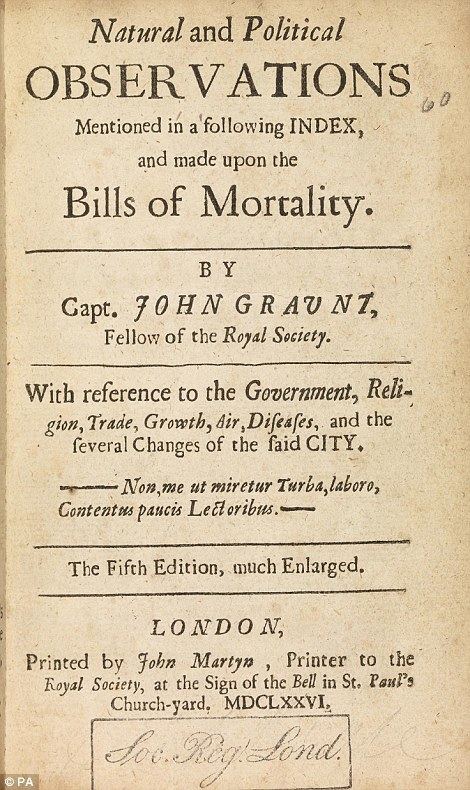
Graunt, along with William Petty, developed early human statistical and census methods that later provided a framework for modern demography. He is credited with producing the first life table, giving probabilities of survival to each age. Graunt is also considered as one of the first experts in epidemiology, since his famous book was concerned mostly with public health statistics.
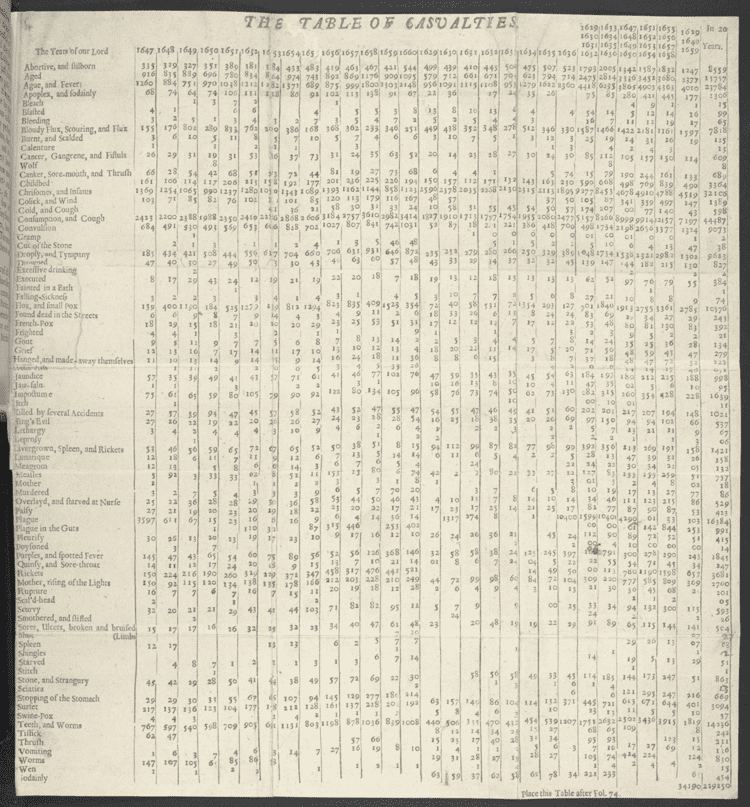
His book Natural and Political Observations Made upon the Bills of Mortality (1662 Old Style or 1663 New Style) used analysis of the bills of mortality (weekly statistics of deaths) in early modern London as Charles II and other officials attempted to create a system to warn of the onset and spread of bubonic plague in the city. Though the system was never truly created, Graunt's work in studying the rolls resulted in the first statistically based estimation of the population of London. His work ran to five editions by 1676.
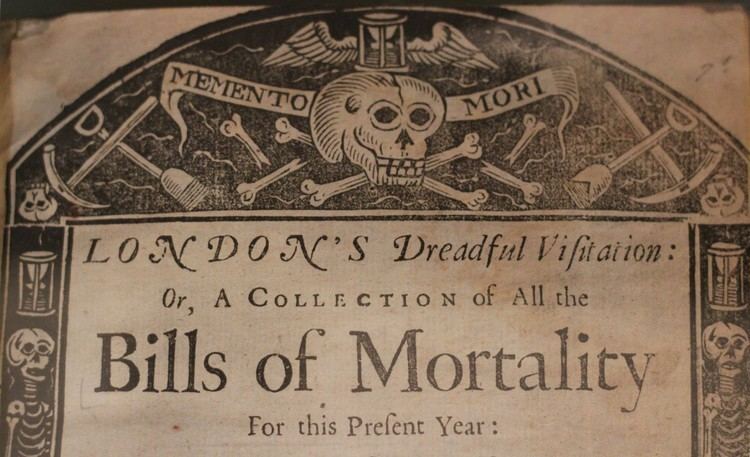
The erudition of the Observations led Graunt to the Royal Society, where he presented his work and was subsequently elected a fellow in 1662 with the endorsement of the King. He was chosen as a member of the council in November 1664 and represented the society at various meetings.
His house was destroyed in the Great Fire of London and he encountered other financial problems leading eventually to bankruptcy. His daughter became a nun in a Belgian convent and Graunt decided to convert to Catholicism at a time when Catholics and Protestants were struggling for control of England and Europe, leading to prosecutions for recusancy. He died of jaundice and liver disease at the age of 53. John Aubrey reported that he was "a pleasant facetious companion and very hospitable" and noted that his death was "lamented by all good men that had the happinesse to knowe him."
Tribute to Graunt's pioneering work was paid by Sir Liam Donaldson on the tenth anniversary of the Public Health Observatories.
